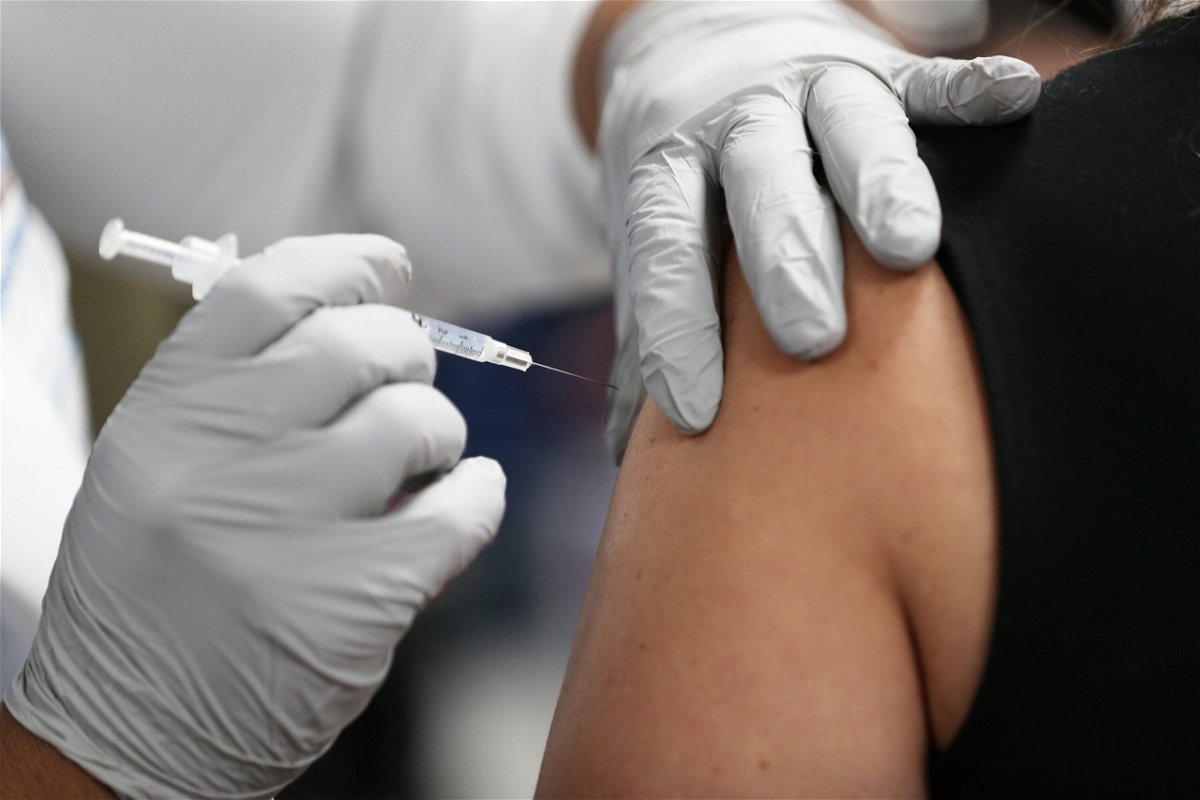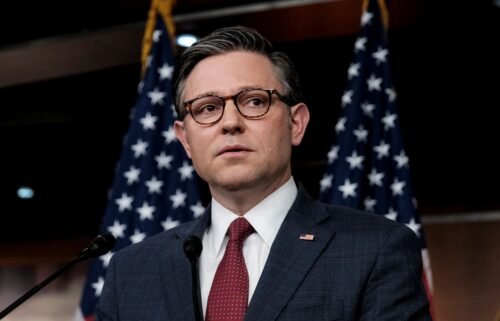A third of eligible people aren’t vaccinated. Here’s what we know about them

A healthcare worker receives a Pfizer-BioNtech Covid-19 vaccine.
By Zachary B. Wolf, CNN
We’ve been referring a lot to “the unvaccinated” vs. “the vaccinated” in very general terms that paint over who, exactly, is in these groups and what might be motivating them.
I went to CNN’s political forecaster, Harry Enten, to get his impression of what we know specifically about the unvaccinated and what might convince them to get the vaccine.
Our conversation, conducted via instant message, is below.
WHAT MATTERS: Hi, Harry! I normally talk to you about politics, but we’re all Covid journalists now and maybe forever.
ENTEN: Hi Mr. Wolf! The disaster over the last year and almost a half has certainly changed all of our lives for forever.
WHAT MATTERS: We know the way out of it is through vaccines, but now we’re being told by the CDC that even vaccinated people should mask up in high transmission areas because not enough of the country has gotten vaccinated. What, in the most general sense, do we know about that unvaccinated population?
ENTEN: Well, I think we know a few things.
1. They’re more likely to be Republicans than Democrats. Most polling (see here) shows that somewhere between 50% and 60% of Republican adults are vaccinated compared with 80% to 90% of Democratic adults.
2. They’re likely to be younger. About 90% of Americans age 65 and older have received at least one dose (see here and click on age), while only a little more than 50% of those age 18-24 have. That percentage is even lower for 12- to 17-year-olds.
3. They’re likely to be Black or Hispanic. This is a harder number to come by because it’s not tracked by every state agency and sample sizes on polls are smaller, but among the entire population and the states that are tracked, about 48% of White Americans have received at least one dose compared to 41% of Hispanics and 38% of Black Americans (see here). (Nearly two-thirds [65%] of Asians have.)
WHAT MATTERS: Just about 57% of the country has gotten one dose and just about half of the country is fully vaccinated, according to the CDC. But zero people under 12 have gotten the shot. So how big is the universe of people that’s actually holding us up?
ENTEN: Well, this has been one of the interesting things from a journalistic perspective. What is the best dominator?
I can spend a day on that all. But the important thing to realize here is that two-thirds (67%) of those 12 and older (who are only ones eligible) right now have received at least one dose. A clear majority (58%) are fully vaccinated, per the CDC.
*Side note: There is a small fraction of those under 12 who have been vaccinated because of trials.
WHAT MATTERS: So it’s a third of eligible people, give or take?
ENTEN: Yes. About a third of the eligible population has refused to take a dose. But that drops as you go up the age ladder. Among the most at-risk, age 65+, from the virus (though we are all at least at some risk and everyone should get vaccinated), 80% are fully vaccinated and 90% are at least partially vaccinated.
WHAT MATTERS: My impression of the groups you mention above (and they’re not mutually exclusive!), but my impression of what’s holding back vaccines goes something like this: Young people might think they’re invincible, so they don’t prioritize going in. Conservatives might be skeptical of the government and vaccines. And racial minorities might have a legitimate historic fear of being treated like guinea pigs. What does the data say about what motivates these groups?
ENTEN: So, I think the last Kaiser poll in June gives us a good indication of what is going on here. They asked different groups why they are hesitant or resistant.
Republicans actually basically give a slew of different answers (which may be code for saying they just don’t want it no matter what). Somewhere between 46% and 55% say the vaccine is too new, side effect worries, just don’t want to get it, don’t trust the government, don’t think they need it, don’t think they need it, etc.
Compare that to Black Americans, the two top answers by far are vaccine is too new and worried about side effects (55%). Among those under 30 who haven’t received a dose, 65% say they don’t think they need one is a major reason.
WHAT MATTERS: What do we know about who is persuadable to get the vaccine and how they might be persuaded?
ENTEN: So this is interesting. What is the definition of persuadable? I think you could consider two groups to be persuadable.
The ones who say “we’ll see about this” and the ones who say “I’ll only take the vaccine if forced.” Both are about 10% of the entire adult population.
Much of the wait-and-see crowds wants some more reassurances that the vaccine is safe. In that Kaiser poll I mentioned, 56% of those who were not vaccinated, but said at a minimum that they were waiting and seeing, indicated that full FDA approval of a Covid-19 vaccine would make them more likely to get a vaccine. I think the answer to the “only take a vaccine if forced” crowd is pretty obvious: vaccine mandates. People may complain about them, but the polling indicates anyway that they could work.
WHAT MATTERS: We’re talking generally here about a country of more than 330 million people when we know that regional disparities in vaccine acceptance play a huge role in this problem, with huge fluctuations between states and within states. I know the South is less vaccinated than the rest of the country. I know West Virginia got a good start on vaccines but now lags. And we know there are outbreaks in places like Los Angeles, which have better-than-average vaccine coverage. What regional vaccine storylines are popping out to you?
ENTEN: I mean, New England being so vaccinated is something else for one thing. Maine and New Hampshire are states where Trump competed hard in. Nearly won both of them in 2016. Both have about three-quarters of their adult population vaccinated. You won’t find a group of states more vaccinated than the six in New England.
Beyond that, you mentioned West Virginia, what we saw initially was smaller states on the whole had good vaccination distribution plans. Eventually though, it became about people willing to get a vaccine. I’ll note two other things: first, you and I spoke about this earlier this week. The Southeast has been lagging in vaccinations. It’s a spot where there are both a lot of Republicans and a lot of Black Americans — two groups less likely to get vaccinated.
Over the last week, though, a lot of Southeast states, where Covid cases are high, have been ranking in the top for most recent vaccinations. Secondly, I’ll note that even where vaccinations are high, a lot of the overall population (a third or more) remains unvaccinated. This includes California.
WHAT MATTERS: And as you were typing that, I looked at the Kaiser data you linked above and in California, Latinos are more than a third of the population, but only 29% of the vaccinated, so perhaps in states with larger Latino populations, that also plays a factor.
ENTEN: We see this in state after state. Blacks and Hispanics make up a lower share of those who are vaccinated than of the overall population. That’s been the case since the beginning of the vaccination campaign and unfortunately continues to be.
WHAT MATTERS: But perhaps they are more moveable — and I know you’re not sold on that term — than White Americans who are opposed to vaccines.
ENTEN: Well, it’s a good question. And yes, I would say you are onto something! Among White adults who have not gotten a dose, 49% say they’ll never get one. It’s just 26% among Blacks or Hispanics.
WHAT MATTERS: OK, Harry. I’ve probably dominated enough of your time (and thanks for sharing it!). Any parting thoughts for the What Matters audience?
ENTEN: I’ll sound like a broken record here, but get a vaccine if you haven’t. They work. I just can’t say it enough. You could save your life or someone you care about.
WHAT MATTERS: Hear! hear! See you later, sir.
The-CNN-Wire
™ & © 2021 Cable News Network, Inc., a WarnerMedia Company. All rights reserved.




